A major project to improve the accessibility of Van Buren Street in Herndon is officially complete.
Known as a “complete streets project” in transportation jargon, the project widened Van Buren Street along a one-half mile stretch from Old Spring Street to Herndon Parkway.
Complete streets is an approach to designing streets that supports safety and access for all users, including pedestrians and bicyclists.
In addition to widening travel lanes to 11 feet, the project added curb-and-gutter and bicycle lanes in each direction. Other upgrades include the addition of 5-foot-wide sidewalks, crosswalks, and traffic signals at Alabama Drive. Overhead utility poles were also relocated and stormwater management facilities upgraded.
Construction on the project started in the spring of 2022.
At a Herndon Town Council meeting late last month, Town Manager Bill Ashton II said the project was substantially complete.
“We have had the contractors out there making some corrections to some elements that we found were deficient to the design,” Ashton said.
He also noted that the project has been in the works for years.
“This is a project that has probably been ten years plus in the making,” he said.
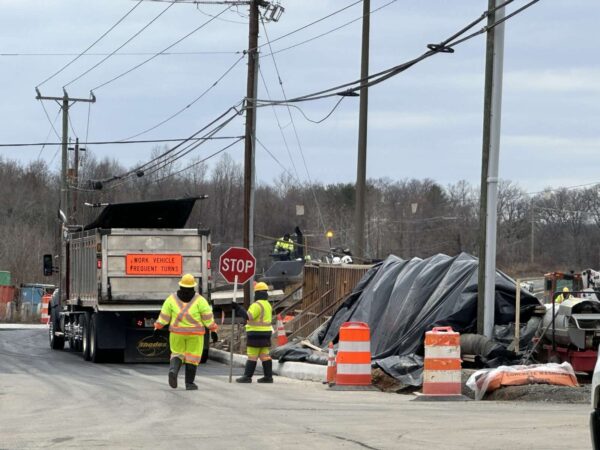
For the next few months, drivers will have just one road to reach Route 7 (Leesburg Pike) from Wolf Trap.
The access point at Trap Road is scheduled to close at 7 a.m. tomorrow (Wednesday) and will remain blocked to traffic until 9 a.m. Saturday (April 22), the Virginia Department of Transportation announced last week.
Drivers will be required to use Towlston Road in order to travel between Route 7 and Trap Road.
“By Saturday, April 22 at 9 a.m., the eastbound lanes of Route 7 will shift to the south, and Trap Road will reopen at Route 7 to incoming traffic,” VDOT said. “Drivers on eastbound Route 7 will be able to turn right onto Trap Road.”
However, Trap Road will remain closed to outgoing traffic, which will still need to use Towlston through this summer. A full reopening is currently anticipated in August, according to VDOT.
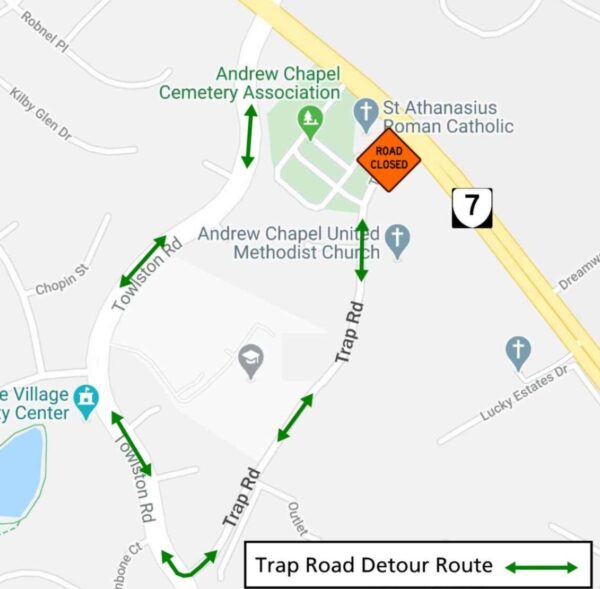
The closure is part of the ongoing project to widen Route 7 from four to six lanes along a nearly 7-mile stretch from Reston Avenue to Jarrett Valley Drive. Under construction since 2019, the project is also adding 10-foot-wide shared-use paths on both sides of the roadway and redesigning key intersections.
New traffic patterns necessitated by a reconstruction of the Baron Cameron Avenue intersection will be in place until 5 a.m. Thursday (April 20). The new Lewinsville Road intersection is on track to open in May.
The overall Route 7 widening is expected to be completed by July 31, 2024, according to the project website. It costs an estimated $313.9 million.
The reconstruction of the Route 7 (Leesburg Pike) intersection at Baron Cameron Avenue begins this week in Reston.
Part of a massive project to expand Route 7, the construction will usher in new traffic patterns on the nights of April 10-14 and April 16-20 between 8 p.m. and 5 a.m.
The triple left-turn lanes from westbound Route 7 to Baron Cameron Avenue will be reduced to a single-left turn lane from 8-10 p.m. only. The Virginia Department of Transportation (VDOT) is in the process of widening a nearly 7-mile stretch of Route 7 between Reston Avenue and Jarrett Valley Drive.
“Please use caution and be alert to vehicles and equipment entering and exiting the work area. All work is weather-dependent and subject to change,” VDOT cautioned in a recent traffic alert.
Between 8 p.m. and 5 a.m., drivers on Springvale Road to Baron Cameron Avenue will turn right onto westbound Route 7 and follow a detour route to Reston Parkway and Wiehle Avenue in order to get to Baron Cameron Avenue.
Drivers on Baron Cameron Avenue, Hunter Gate Way and Hunter Mill Road who are trying to reach westbound Route 7 will follow Baron Cameron Avenue westbound to a detour route along Wiehle Avenue and Reston Parkway.
Additionally, all Route 7 eastbound traffic will be reduced to a single-through lane.
Between 10 p.m. to 5 a.m., the triple left-turn lanes from westbound Route 7 to Baron Cameron Avenue will be completely closed. Drivers on eastbound Route 7 to Baron Cameron Avenue will use a service road at a nearby car wash to access Baron Cameron Avenue.
The right-turn lane from Baron Cameron Avenue to eastbound Route 7 will remain open at all times.
According to VDOT documentation from a recent meeting, the project is expected to cost roughly $314 million and should wrap up by the end of July next year. Construction began in May 2019.
Key milestones so far include the addition of a left-turn lane from westbound Route 7 to Baron Cameron Avenue, temporary intersection improvements at Towlston Road, and a third through-lane from Riva Ridge Drive to Reston Avenue.
The new Lewinsville Road intersection with a displaced left-run lane from eastbound Route 7 to Lewinsville is expected to open in late May, according to VDOT.
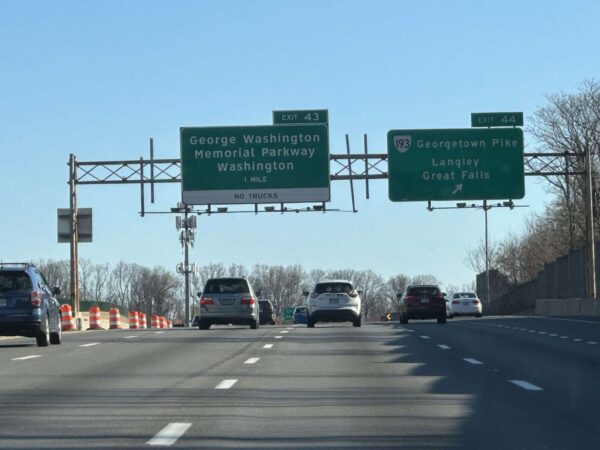
(Updated at 2:10 p.m.) Construction on the widening of the Capital Beltway (I-495) can continue while a lawsuit filed by McLean residents works its way through the court system, a federal judge ruled this morning (Friday).
The Northern Virginia Citizens Association had urged U.S. District Judge Leonie M. Brinkema to issue a preliminary injunction against the project that would halt all work until further environmental analysis is conducted.
The ruling, which came after a 10 a.m. hearing at the district court in Alexandria, gave an initial victory to federal and state transportation officials and express lanes operator Transurban, who have argued that the additional review sought by residents is unnecessary.
“We remain confident that this project is in compliance of all environmental regulations and associated requirements and approvals, Transurban Director of Corporate Affairs and Marketing Tanya Sheres said in a statement to FFXnow. “Alongside our project partners, we continue to focus on minimizing impacts to communities as we work to deliver the expanded travel choices, environmental enhancements, and improved safety that the more than 230,000 daily travelers of this corridor are relying upon.”
Filed on March 16, the NOVA Citizens Association’s complaint detailed health and environmental impacts of construction on the I-495 Northern Extension (495 NEXT) project, which is adding 2.5 miles of express lanes from the Dulles Toll Road in Tysons past the George Washington Memorial Parkway in McLean.
The Federal Highway Administration approved an environmental assessment for the project in 2021, finding that it would not have a significant impact and allowing it to proceed.
However, the NOVA Citizens Association says that subsequent design changes to stormwater facilities and ramps at the GW Parkway interchange should’ve necessitated another review with an opportunity for public input.
“Defendants’ activities will irreparably damage Plaintiff’s neighborhood and the surrounding human and natural environment in violation of federal law,” lawyers for the association wrote in a memo on their injunction request. “The Project’s adverse effects already vastly exceed the scope of what the Virginia Department of Transportation (“VDOT”) submitted and the Federal Highway Administration (“FHWA”) approved.”
In declarations opposing an injunction, VDOT and FHWA officials argue that the changes to the GW Parkway design reduced its impact on nearby residential properties and were accounted for in a Interchange Justification Report Addendum approved by FHWA on Jan. 14, 2022.
“The revised configuration of the GWMP interchange lessened the overall impacts of the Project by eliminating conflicts with large utility transmission towers and reducing the need for right-of-way acquisition,” VDOT Northern Virginia Megaprojects Director Susan Shaw said.
According to Shaw, a relocation of ponds by the GW Parkway interchange improved stormwater management, including avoiding work adjacent to the Potomac River, and the changes stayed within the scope established by the completed environmental assessment.
A one-year delay of construction on 495 NEXT, which broke ground in March 2022, would cost VDOT an additional $16.4 million in management and oversight costs, Shaw estimated. If the delay goes into a second year, another $17.2 million would be added to that bill.
“If the Project is enjoined, the current work would need to be suspended in its current condition, with accommodations as needed to ensure the safety of the traveling public,” Shaw wrote. “This would require the lane closures, concrete barriers, temporary environmental controls, to remain in place with all the traffic congestion and disruption those active work zone features create. The duration of construction impacts would be extended, such as noise, dust, traffic delays, and lack of full shoulders.”
Construction on 495 NEXT is currently projected to continue into 2026, with the new express lanes set to open later in 2025.
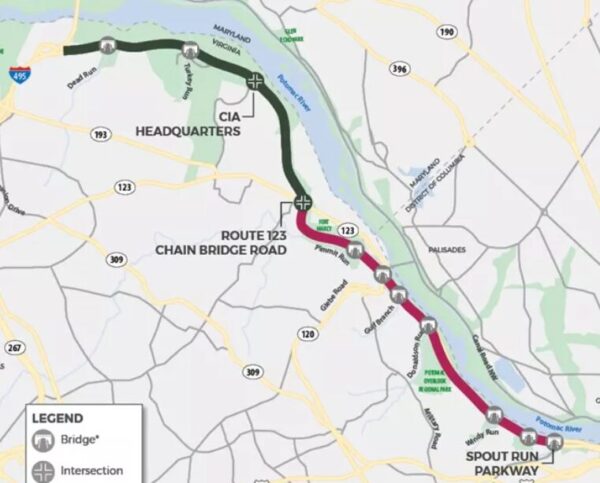
Updated at 12:55 p.m. on 4/14/2023 — The National Park Service has delayed the GW Parkway changes due to forecasts calling for inclement weather over the weekend. The lane shift is now expected to begin around April 21-24.
Earlier: Drivers will soon have to get accustomed to a brand-new traffic pattern on the McLean section of the George Washington Memorial Parkway.
Starting Saturday, April 15, the existing southbound lanes will close between the Capital Beltway (I-495) and Route 123 (Dolley Madison Blvd and Chain Bridge Road) so crews can begin rehabilitating that portion of the roadway.
All traffic will shift to the northbound lanes, which have been expanded with the addition of a third, temporary lane in the median. The new lane will change directions based on where rush-hour traffic is headed.
“This temporary lane will serve as a reversible lane, which provides flexibility to change direction for morning and evening rush hours,” the National Park Service said in a news release yesterday (Monday). “This traffic pattern allows the project contractor greater access to the roadway, which will reduce the time needed to complete the project.”
If there’s inclement weather on April 15, the new traffic pattern will commence on Saturday, April 22 instead.
On April 15, the NPS will implement a new, temporary traffic pattern on George Washington Memorial Parkway between I-495 and Route 123 for the next phase of the North Parkway Rehabilitation Project: https://t.co/3yjIWOU0hL pic.twitter.com/PFFBTyoNQ0
— National Parks of Greater Washington, DC (@NPSNewsDC) April 3, 2023
According to the NPS, here is the daily schedule for the reversible lane:
Weekday morning rush hour (5:30 a.m.-9:30 a.m.)
- Two lanes southbound (toward Washington, DC).
- Drivers who need to exit at Route 123 or CIA Headquarters must use the right lane.
- One lane northbound (toward Maryland/Virginia).
Weekday evening rush hour (2:45 p.m.-7:15 p.m.)
- Two lanes northbound (toward Maryland/Virginia).
- Drivers who need to exit at Route 123 or CIA Headquarters must use the right lane.
- One lane southbound (toward Washington, DC).
Weekdays (9:30 a.m.-2:45 p.m.) and weekends
- One lane southbound (toward Washington, DC).
- One lane northbound (toward Maryland/Virginia).
The park service advises drivers to pay attention to traffic signs, adhere to the roadway’s 40 mph speed limit, and prepare for potential delays.
“To increase safety, small physical barriers will divide the narrow, 10-foot-wide lanes,” the NPS said, noting that vehicles that weigh over 10,000 pounds will still be barred from the parkway.
Federal officials broke ground on the north GW Parkway rehabilitation in July 2022. The approximately $161 million project will update the parkway’s northern section — from the Beltway to Sprout Run in Arlington — for the first time since it was originally completed in 1962.
Funded by the Great American Outdoors Act, which was passed in 2020 to support infrastructure and recreational improvements on public lands, the project will install new pavement, redesign the Route 123 interchange, repair stormwater facilities, lengthen some entrance and exit lanes, and more.
The NPS anticipates the three-lane pattern remaining in place throughout the rest of construction, which is projected to finish in December 2025.
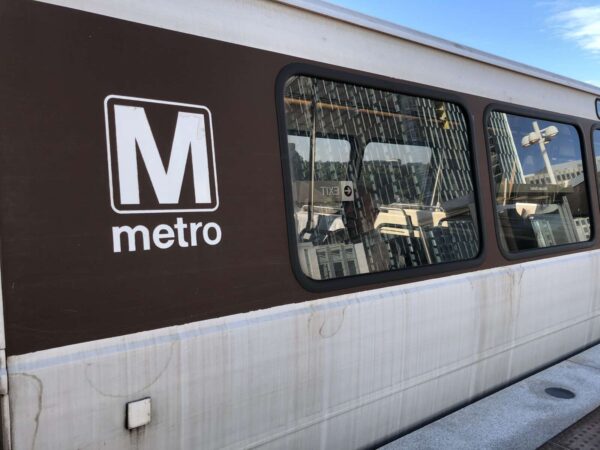
The final touches on the first phase of the Silver Line project that brought Metro into Tysons are falling into place, almost a decade after the five new rail stations in Fairfax County opened.
Construction on the shoulder of the Dulles Connector Road — which links the Dulles Toll Road in Tysons to the I-66 interchange in Idylwood — has been completed, according to a presentation that the Fairfax County Department of Transportation gave to the Board of Supervisors’ Phase 1 Dulles Rail Transportation Improvement District Commission on Tuesday (March 28).
The shoulder reconstruction, which began in April 2022, and some manhole repairs were the last “outstanding” items in the Dulles Corridor Metrorail Project’s first phase, FCDOT Special Projects Division Chief Martha Coello told the commission.
Some lane closures were in place this week for the shoulder construction. A spokesperson for Metropolitan Washington Airports Authority didn’t respond by press time on whether that was the last round of closures.
With a total cost of $2.98 billion, the first phase expanded Metro to Tysons and Reston, launching passenger service in July 2014.
To continue paying off debt from the project, the commission approved a flat tax rate of nine cents per $100 of assessed value for commercial and industrial properties in the special tax district created to fund the Silver Line.
Fairfax County Department of Management and Budget Deputy Director Joe LaHait recommended continuing the current tax rate into fiscal year 2024, which begins July 1, “since coverage in the prior fiscal year (FY2022) cannot be maintained at or above the 1.4x threshold,” an advisory board reported to the commission.
The tax district’s policy, adopted in 2013, dictates that the tax rate should be set at a level that would cover 1.4 times the amount of debt owed each year. The rate can be lowered by up to two cents if that level of coverage has been maintained for two consecutive years.
Though coverage is projected to exceed 1.4 in 2023 and 2024, it dipped below that target to 1.36 for the first time ever last year, according to county staff.
Since it took effect in 2005, the Phase 1 tax district has generated approximately $428.5 million, including $15.5 million in the current fiscal year 2023, as of February — enough to cover the $400 million that Fairfax County was tasked with giving to the MWAA for the project.
“All debt has been issued for this tax district and reached the $400 million cap paid to the Airports Authority,” the advisory board’s minutes from its March 15 meeting said. “The funds were collected via cash contribution and bonds.”
With the county’s obligation covered, the tax district revenue will now be used to pay off debts. As of June 30, it had about $125 million in outstanding debt.
At its Tuesday meeting, the commission also approved a tax rate of 18 cents per $100 of assessed value for the special tax district for the Silver Line’s second phase, which extended Metro from Reston to Ashburn in Loudoun County.
The approved rate represents a two-cent reduction from the current fiscal year 2023 rate, which staff said in March 2022 couldn’t be lowered.
Per a staff presentation, the Dulles Airport and Ashburn stations remain the busiest of the new stations since they opened in November. New Fairfax Connector bus routes supporting the stations in Reston and Herndon are carrying 579 passenger trips per day.
The tax rates for both the Phase 1 and Phase 2 districts will be formally adopted when the Fairfax County Board of Supervisors approves a budget for FY 2024 on May 9.
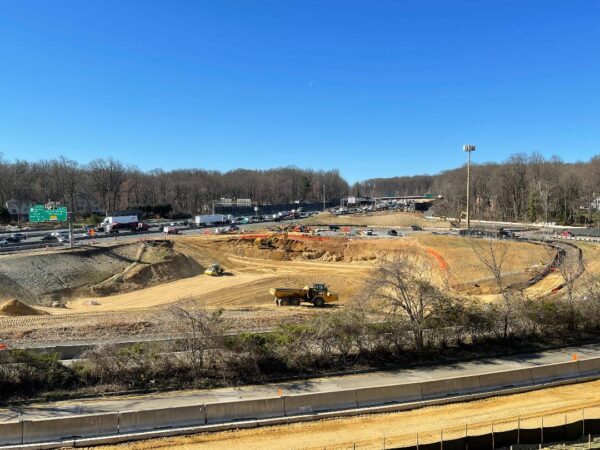
(Updated at 11:55 a.m.) A group of McLean residents opposed to the extension of the I-495 toll lanes past their neighborhoods have turned to the courts in a bid to halt the project, now in its second year of construction.
The Northern Virginia (NOVA) Citizens Association filed a lawsuit with the U.S. District Court in Alexandria on Thursday (March 16) alleging that major revisions to the project design violated federal law, resulting in “significant on-going environmental harms” to residents.
The Virginia Department of Transportation, Secretary of Transportation W. Sheppard Miller, the Federal Highway Administration (FHWA), private toll lanes operator Transurban, and Transurban subsidiary Capital Beltway Express LLC are named as defendants.
“As a result of Defendants’ actions, NOVA and its members are experiencing significant adverse environmental impacts caused by the Project,” the complaint says, arguing that the road construction and loss of trees will contribute to noise, light, air pollution, water quality, erosion and health issues.
In the works since 2018, the I-495 Northern Extension project (495 NEXT) is adding 2.5 miles of express lanes from the Dulles Toll Road in Tysons past the George Washington Memorial Parkway in McLean, reconfiguring many of the bridges and interchanges within that span.
The GW Parkway interchange has been a particular point of concern for the NOVA Citizens Association, whose members fear that their neighborhood along Live Oak Drive will be destroyed to accommodate planned ramps and stormwater management ponds.
According to the complaint, VDOT unveiled significant changes to the project design in September 2021 and June 2022 — months after the FHWA approved its environmental assessment, an evaluation of the project’s potential impact required by the National Environmental Policy Act (NEPA).
The changes — including a consolidation of stormwater facilities, a narrowing of Live Oak Drive to 22 feet wide, and the relocation of an I-495 Express Lanes exit ramp to the GW Parkway — were substantial enough that additional environmental review should’ve been conducted, the association contends.
“The major changes to the stormwater control plan, the expansion of impermeable surfaces, and the greatly expanded deforestation will result in a significant increase in the release of stormwater which is contaminated with pollutants onto the properties of members of the association,” the complaint says.
The complaint also raises concerns about the safety of narrowing Live Oak Drive, especially for kids traveling to Cooper Middle School and the nearby Langley Swim & Tennis Club, and a reported plan to place a 5G cell tower on one resident’s property.
In a Feb. 24 declaration supporting the complaint, Live Oak Drive residents Pritesh and Marisha Patel wrote that the noise and pollution from the 495 NEXT construction has caused “irreparable harm” to their family, particularly their 11-year-old son, who has asthma. Read More
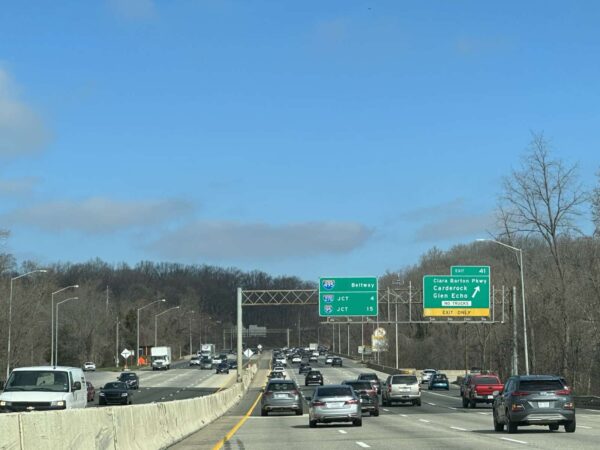
(Updated at 2:50 p.m. on 3/16/2023) Virginia’s extension of the I-495 Express Lanes past the George Washington Memorial Parkway in McLean remains on track for a 2025 opening, even as its counterpart across the Potomac River faces another setback in its efforts to widen the Capital Beltway.
Private toll lanes operator Transurban pulled out of Maryland’s project to add toll lanes on its side of the Beltway and replace the American Legion Bridge on Friday (March 10), citing “significant delays to environmental approvals, changing political landscape and environmental lawsuits that remain unresolved.”
While that project is now in limbo, the Virginia Department of Transportation says Transurban’s departure won’t affect its I-495 Northern Extension (495 NEXT) plan, which is entering a second year of construction this month.
“Virginia’s 495 NEXT project to extend the Express Lanes on the Beltway is independent of the Maryland project,” VDOT told FFXnow. “…While VDOT will continue to coordinate with Maryland as they determine how to best deliver the Maryland project, we do not anticipate changes to the 495 NEXT project.”
The Virginia project has long been plagued by fears that Maryland won’t follow through on the so-called Beltway Accord that then-governors Ralph Northam and Larry Hogan announced in 2019 to replace the American Legion Bridge, which opened in 1962 and last expanded in 1992.
(Correction: This story previously said the bridge hadn’t been updated since it originally opened, but it was widened to 10 lanes in 1992. Hat tip to boywaja)
Where Virginia officials have embraced them as a means of addressing traffic congestion, express lanes have faced fierce opposition in Maryland from residents, environmental groups and local leaders, particularly in Montgomery County from as far back as 2005.
Despite that tangled history, which has included court battles, delays and a downsizing, VDOT expressed confidence in a statement to FFXnow that Maryland will ultimately move forward with its Beltway toll lanes, noting that the project has gotten federal approval.
Our colleagues in Maryland have told us that they remain committed to congestion relief in the corridor and have expressed their intention to deliver their project in accordance with the federally approved Record of Decision, which is a managed lanes project. Virginia will continue to coordinate with Maryland as they determine their next steps to alleviate one of the region’s worst traffic bottlenecks.
The department maintains that, even on its own, 495 NEXT will reduce congestion and provide new travel options. In addition to adding 2.5 miles of toll lanes to the region’s roughly 90-mile network, the project includes a shared-use trail and could usher in bus service between Tysons and Maryland.
An environmental assessment from 2020 found that 495 NEXT will move 2,500 more people per hour in both directions and reduce travel times by up to 24 minutes for northbound drivers, according to VDOT.
“By increasing the person-carrying capacity of I-495, drivers will have less incentive to use neighborhood cut-through routes, reducing traffic on local roads,” VDOT said. “The 495 NEXT project will also improve safety throughout the corridor, and replace aging bridges and other existing infrastructure.”
McLean residents and Dranesville District Supervisor John Foust, who represents the area, have argued that failing to extend the toll lanes into Maryland will result in traffic getting bottlenecked at the American Legion Bridge, forcing their neighborhoods to bear the project’s costs for minimal benefits.
Construction on 495 NEXT is expected to continue into 2026, with the express lanes opening to traffic by late 2025.
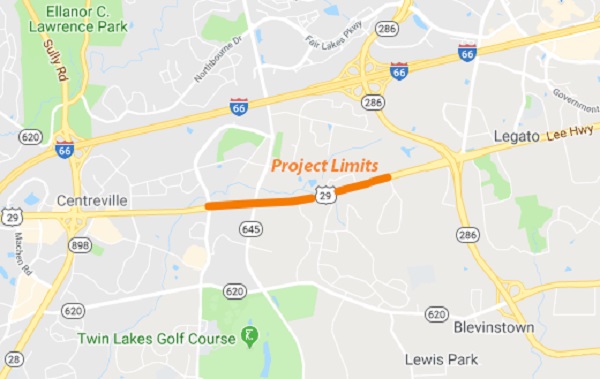
Fairfax County and the Virginia Department of Transportation have kicked off construction to widen a 1.5-mile stretch of Route 29 near Centreville.
Though there will be a ceremonial groundbreaking today (Wednesday), construction on the project began Feb. 9 to add two lanes to the roadway between Union Mill Road and Buckleys Gate Drive.
By the time work finishes in spring 2026, there will be six lanes instead of four on that stretch of road. In addition to the new lanes, the project aims to make improvements to sight distance for drivers and shared-use paths on the roadway.
It will also connect pedestrian and bicycle trails located at the Fairfax County Parkway/West Ox Road interchange.
This work has been on VDOT’s radar for years, with the project first coming to the public at a meeting in October 2018. Notes from a 2019 public hearing say that a 2005 VDOT study “explored the feasibility of providing a continuous 6 lane section from Centreville to the City of Fairfax.”
“Over the past several years, portions of Route 29 have been widened to six lanes (three in each direction) between Centreville and the City of Fairfax,” Mike Murphy, a senior communications specialist at VDOT, wrote in an email to FFXnow.
After this widening, a continuous six-lane section will exist “along the five-mile stretch between Pickwick Road and Shirley Gate Road/Waples Mill Road to improve capacity and safety through the corridor,” Murphy wrote.
The project is removing trees between Stringfellow Road and Meadow Estates Drive on the north side of Route 29. To accommodate that work, residents will need to use alternate routes in place of part of Willow Pond Trail through April 2023.
The estimated cost is $97 million, and those dollars come from four sources: federal, state and local money, plus funding from a I-66 concession fee.
Today’s groundbreaking will be held on the Route 29 service road, near the Brightview Fair Oaks senior living facility. Two members of the Fairfax County Board of Supervisors — Pat Herrity (Springfield) and Kathy Smith (Sully) — plan to attend.
The overhaul of the Nutley Street and I-66 interchange is nearing completion, promising an end to the unpredictability that has characterized trips near the Vienna Metro station over the past three years.
Two new roundabouts at the interchange are scheduled to open tomorrow (Tuesday) morning, the Virginia Department of Transportation recently announced, cautioning drivers to yield to traffic in the loops when entering.
“As part of this traffic pattern change, the temporary traffic signals allowing left turns from the ramps from I-66 West to Nutley Street South and from I-66 East to Nutley Street North will be removed,” VDOT said. “Drivers will instead use the roundabouts to make these movements onto Nutley Street. This is the permanent routing for these movements.”
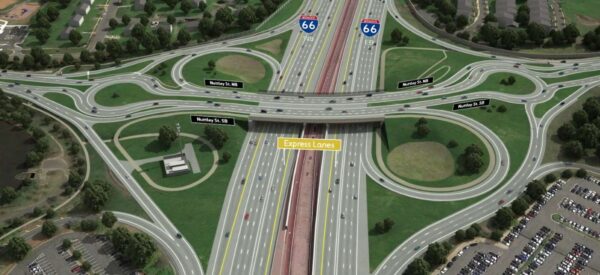
Drivers in the area are no strangers to changing traffic patterns, but this time, the new arrangement is mostly here to stay.
Traveling from I-66 East to Nutley Street North
- Drivers traveling from I-66 East to northbound Nutley Street will take Exit 62 to Nutley Street North and stay to the left on the ramp. They will yield to southbound traffic, then use the roundabout to join northbound Nutley Street toward Vienna.
Traveling from I-66 West to Nutley Street South
- Drivers traveling from I-66 West to southbound Nutley Street will take Exit 62B to Nutley Street South and stay to the left on the ramp. They will yield to northbound traffic, then use the roundabout to join southbound Nutley Street toward Fairfax.
One temporary condition will still be in place. Drivers going from Nutley Street North to I-66 West and from Nutley South to I-66 East must use one of the new roundabouts to access the exit ramps.
“This is a temporary configuration for these movements while ‘bypass’ lanes are completed that will give direct access from Nutley Street North to I-66 West and from Nutley Street South to I-66 East without entering the roundabouts,” VDOT said.
The bypass lanes are expected to open late this spring.
The interchange reconfiguration is part of the Transform 66 Outside the Beltway project, which added 22.5 miles of new toll lanes on the interstate from the Capital Beltway in Dunn Loring to Gainesville.
Under construction since 2020, the new design for the Nutley Street interchange will be safer and more efficient for vehicles and pedestrians, according to VDOT.
A new grade-separated shared-use path will also be added. It will link to other pedestrian improvements planned around the Vienna Metro station as well as a multipurpose path proposed on the west side of Nutley into the Town of Vienna.

